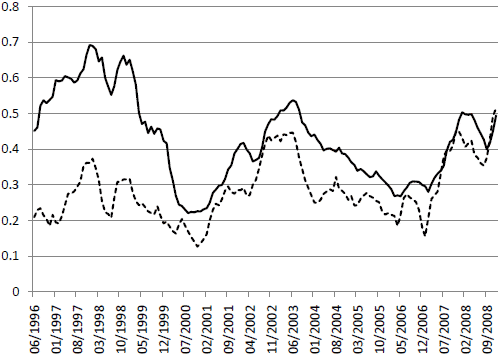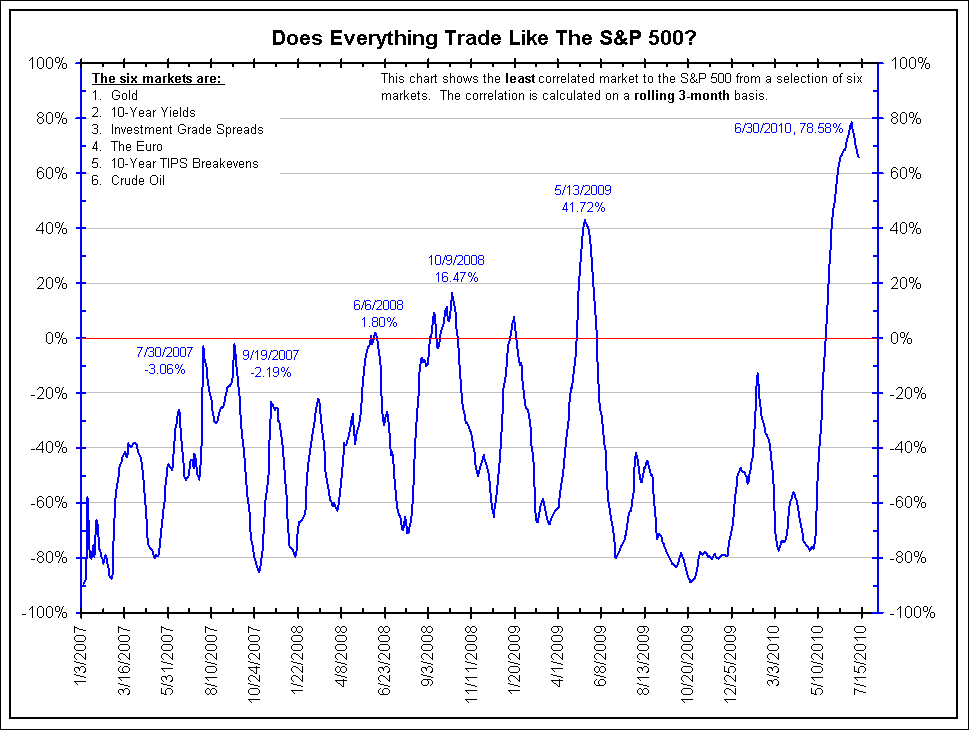In the old(er) days, it was generally said that gold traded in an inverse relationship with the dollar and also, to a lesser extent, other risky assets.
Yet, gold sold off sharply in June:

But the S&P 500 also saw a fall:

And the dollar has also been declining:

Which might be a tad confusing.
So what’s really behind the gold move?
Well, according to Reuters one particular equitised gold product is experiencing rather sharpish outflows in holdings. That would, of course, be the
SPDR GLD exchange traded fund (ETF).
As the newswire
reported on Tuesday:
The world’s largest gold-backed exchange-traded fund, SPDR Gold Trust said its holdings fell nearly 0.5 percent to 1,308.128 tonnes by July 20 from 1,314.211 on July 15. The holdings hit a record at 1,320.436 tonnes on June 29.
To see how that ties with the gold price one would have to chart GLD’s historical assets under management or shares outstanding. Unfortunately, the GLD
SPDR goldshares’s website doesn’t offer archived data on this, only the last noted assessment.
So we’ve done the next best thing.
Thanks to a previous enquiry, we had data up until end-of-May and have updated the chart with the latest shares outstanding figure from the website. Here’s how it looks:

Of course, there might be a perfectly reasonable explanation for that drop.
Some have noted, for example, that iShares’ competing gold product (IAU) slashed its management fees this month in a bid to woo other assets. As IndexUniverse
observed:
Did IAU Just Steal $59 Million From GLD?
It’s too early to call it a trend, but it’s tempting to see one after ETF-share creations last Friday on iShares’ Comex Gold Trust (NYSEArca: IAU) fund were virtually identical to redemptions on State Streets’ SPDR Gold Shares ETF (NYSEArca: GLD).
Net flows into the iShares ETF on July 9 were $59.2 million, a 2 percent increase, which raised total assets after market movement to $3.47 billion, according to data compiled by IndexUniverse.com. Outflows from GLD were $59.1 million, a tiny setback for the second-biggest U.S. ETF, which has more than $51 billion in assets.
The movements came about a week after iShares slashed the price of its gold fund, moving the annual expense ratio from 0.40 percent to 0.25 percent on July 1.
And here’s how IAU’s shares outstanding compare:

Of course, that still doesn’t really explain the impact on the gold price . . .












 Tuesday, July 6, 2010 at 04:07PM
Tuesday, July 6, 2010 at 04:07PM

